Have you ever heard of banana passionfruit? Known as Passiflora Mollissima, it is a type of passion fruit that has a banana-like shape and a refreshing flavor that is reminiscent of peaches. It is native to South America, but it can also grow well in other subtropical and temperate regions.
In this blog post, I will show you my real life experience of growing banana passionfruit in my backyard, how to care for the vines, and how to enjoy the fruits.

What is banana passionfruit
Banana passion fruit is a climbing vine that belongs to the Passifloraceae family, along with other types of passion fruit. It has large, lobed leaves and beautiful pink flowers that attract bees and butterflies. Fun fact, my neighborhood squirrels like to chew on the flowers!
The fruits are elongated and yellow when ripe. They have a thinner skin compared to the more common round passion fruits. Their juicy pulp contains many small seeds. The pulp has a tropical flavor that resembles peaches.

Does a banana passionfruit taste like banana?
While banana passion fruit is named for its banana-like shape, the taste is more akin to a tropical blend of sweet and tangy, peach with a hint of melon. The flesh is juicy and filled with small black seeds, giving it a delightful crunch.

Choose the best variety for your banana passion plant
Before diving into how to grow and care for your banana passionfruit vine, it is important to choose the right variety to ensure a stronger plant and fruitful harvest.
There are two main varieties of banana passion flower I have seen in my local nurseries. Passiflora Mollissima, aka the original and common banana passion fruit variety; Then a couple years later, we got the “Improved Passiflora Mollissima” from the same nursery. It is likely breed within nursery to be more adapted to our region. This is something you can probably do in your own home as well: collect seed, select the strongest plant, then repeat.
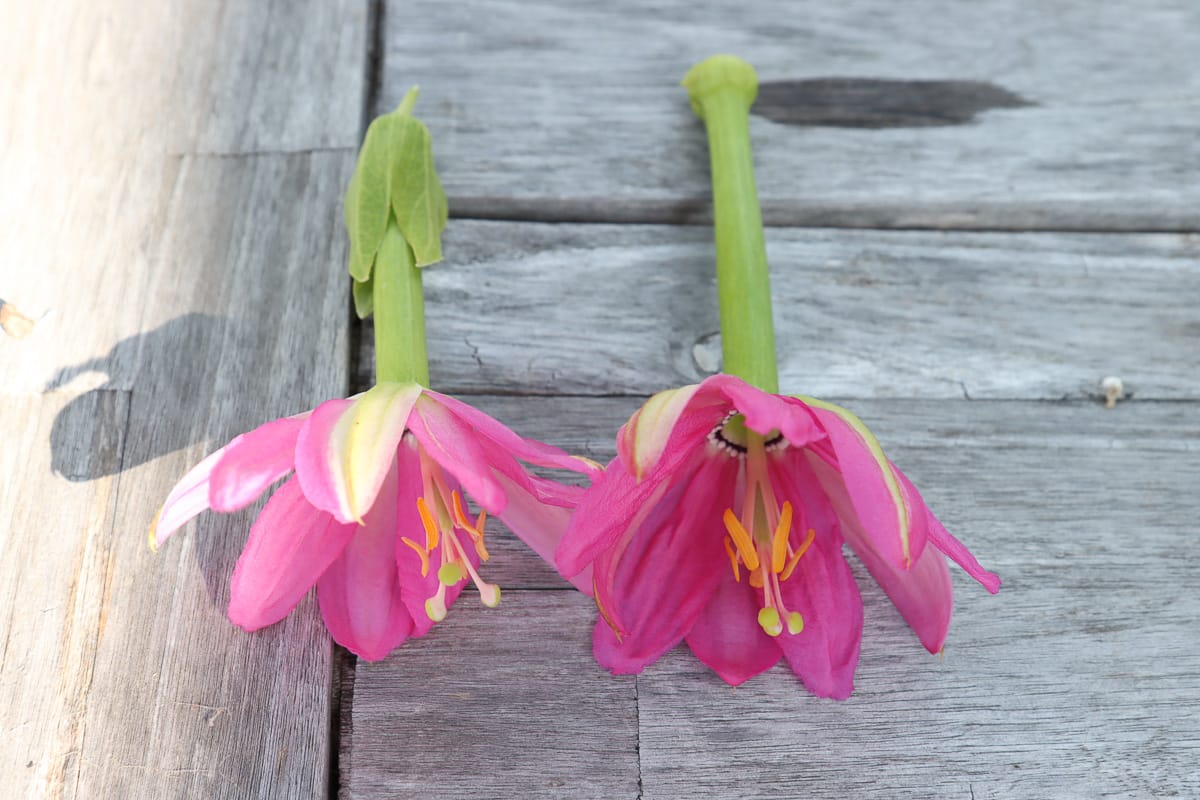
The improved variety is more vigorous and more disease resistant. We have grown both in our backyard, in similar soil condition and sunlight.
In our experience, the improved variety is so much easier to grow. It grows fast, and more importantly, the fertilization rate is a lot higher.. With the original species, we had to hand pollinate a lot. But with the improved varieties, a good amount of flowers turned into fruits without any interference.
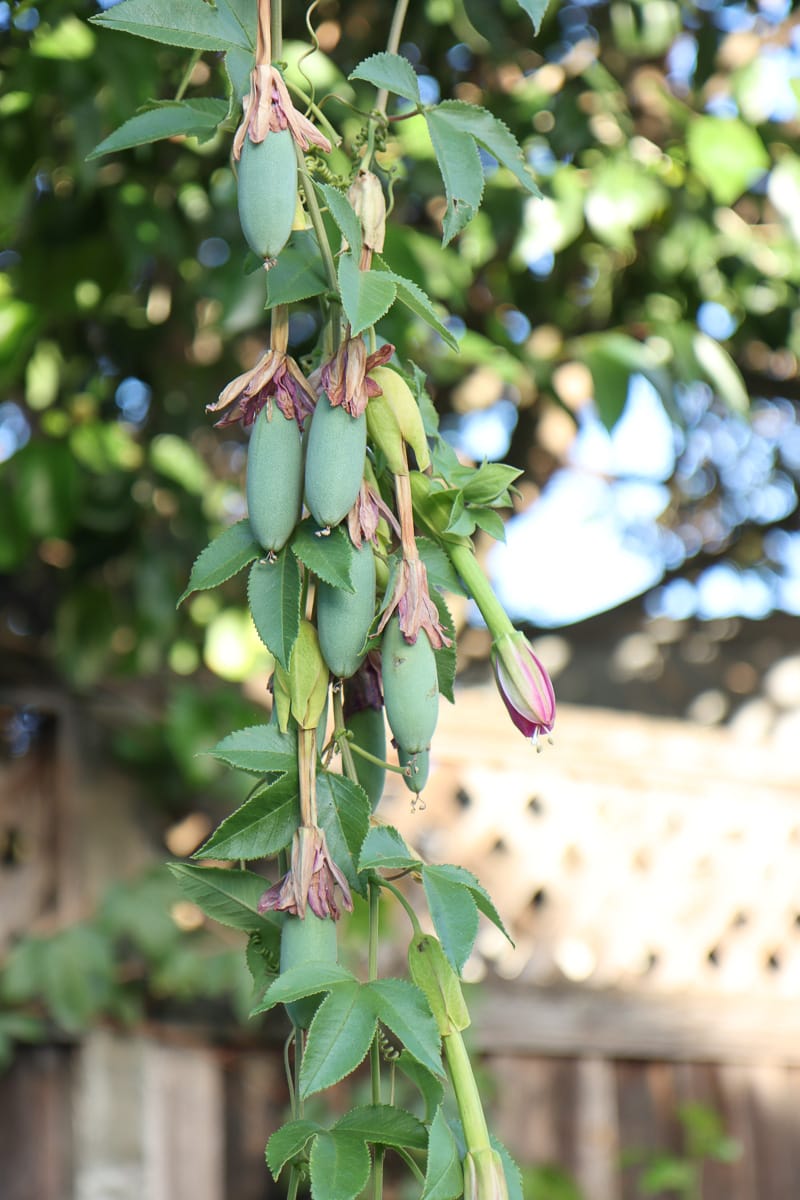
How to grow and care for banana passionfruit plant
Banana passion fruit is not very difficult to grow, as long as you provide it with the right conditions. Here are some tips on how to grow banana passion fruit from seed or transplant.
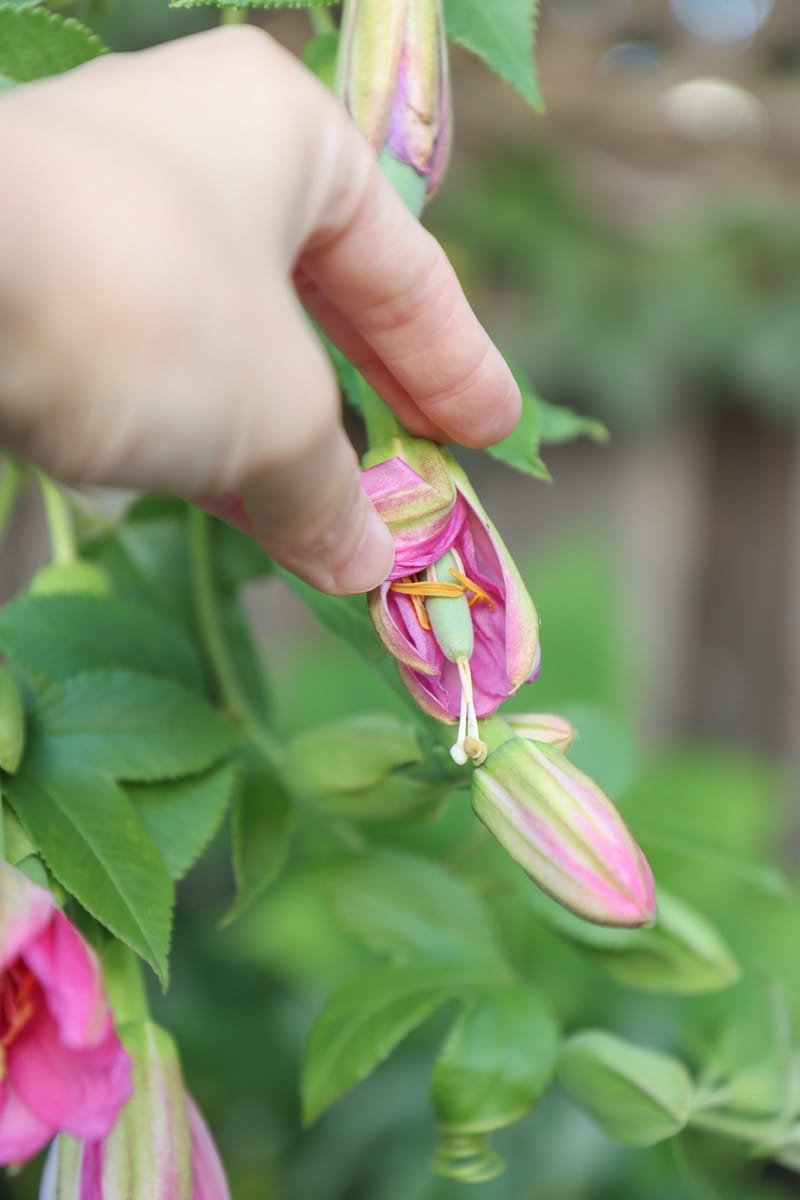
Growing condition
Banana passionfruit plant needs a sunny spot to thrive. It can tolerate some shade, but it will produce more flowers and fruits in full sun. It can also withstand light frost, but it will suffer if the temperature drops below -5°C. Therefore, it is best to grow it in a warm or mild climate, or in a greenhouse or conservatory if you live in a colder area.
Because it is a vine plant, choose a location where you can easily install trellis or garden structure to support the plant.
Banana passion fruit thrives in well-draining, fertile soil with a slightly acidic to neutral pH level. Incorporating organic matter like compost or well-rotted manure can help improve soil structure and fertility.
Seed vs transplant
You can start banana passion fruit from seeds or transplants. Growing from seeds offers a cost-effective option, but it may take longer to see fruit. Transplants, on the other hand, provide a head start and can yield fruit sooner.
We bought our banana passion plants from nurseries within our local region. Note: It is a relatively rare plant, so you may not find it in nearby nurseries, but you’ll have better luck visiting larger nurseries.
Alternatively you can find banana passion fruit seed for sale online, which can be an easier way to acquire them, such as this Etsy shop.
Caring for banana passionfruit
Banana passion fruit is not very demanding in terms of care, but it does need some attention to keep it healthy and productive. Here are some tips on how to care for your banana passion fruit vines.
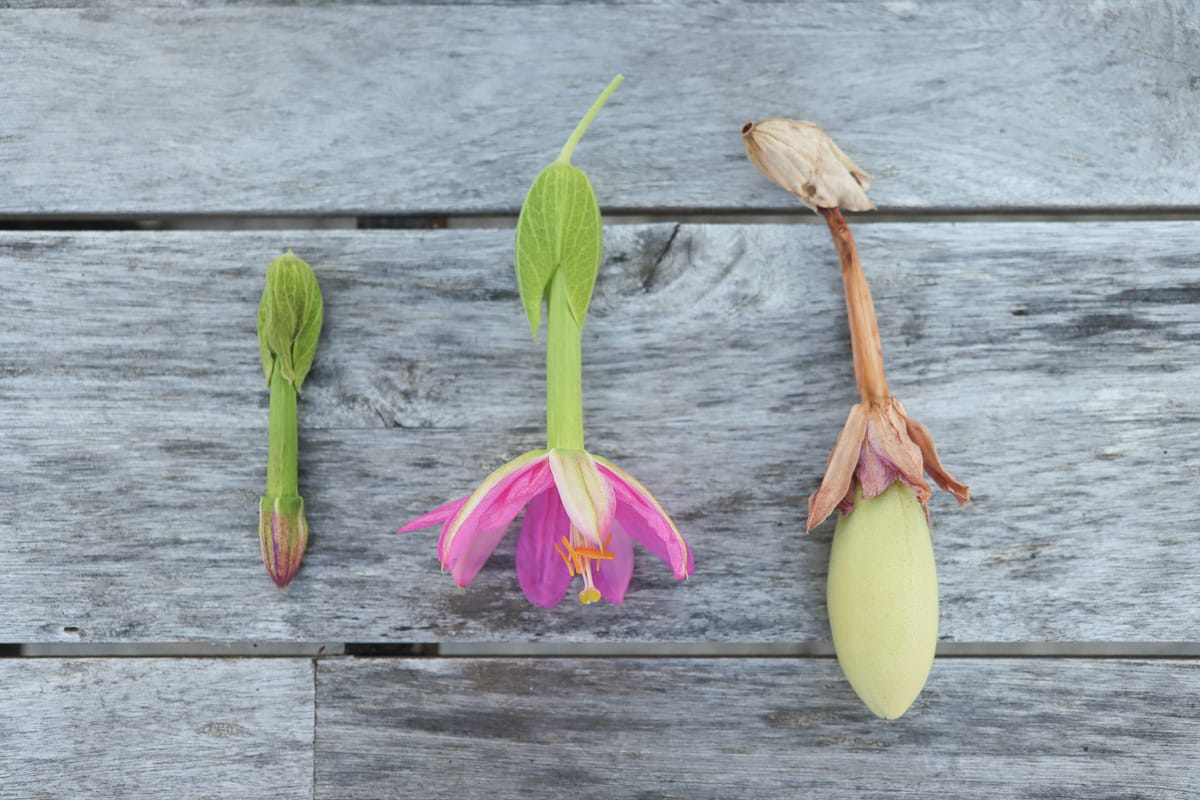
Pruning and training
Banana passion fruit vines can grow up to 30 feet long if left unpruned. Therefore, it is important to prune them regularly to control their size and shape, as they grow and spread crazy fast.
You should prune your vines in late winter or early spring, before they start growing new shoots. During the grow season, it is also a good idea to do some light pruning to keep them under control.
You should remove any dead, diseased, or damaged branches, and cut back any excess growth to maintain a balanced structure.
You should also train your vines to grow on a trellis, fence, pergola, or wall to support their weight and to expose them to more sunlight. The vines can be a great way to cover an unsightly structure, like an old fence or a water tank.
Water and fertilizing
Banana passion fruit vines need regular watering, especially during the hot and dry season. You should water them deeply and thoroughly once or twice a week and mulch the soil around the base of the vines to conserve moisture and prevent weeds.
I’ve set up drip irrigation and have it run 3 times per week, 1 gallon of water each time, and that has been working pretty well
Additionally, fertilize with a balanced, all-purpose fertilizer during the growing season to support healthy growth and fruit production.
Harvesting fruits
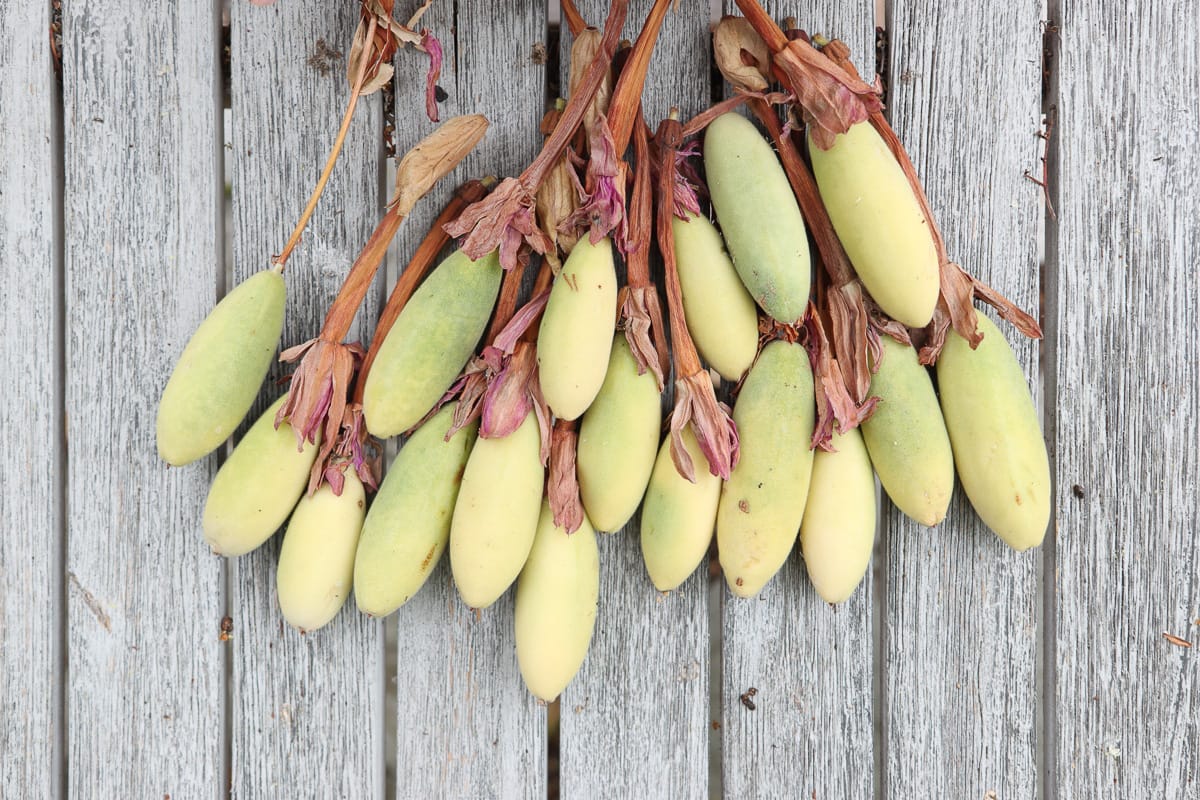
Banana passion fruit vines will start producing fruits about 6-12 months after planting. The first year will likely be a low yield, but just be patient as years goes on, this plant will reward you with tons of delicious fruits!
The fruits will ripen about 2-3 months after flowering. You can tell when the fruits are ripe by their color and aroma. They will turn from green to yellow, and they will emit a sweet and fruity smell.
Ripe fruits will often fall off the vine on their own. During the harvesting season, we would go to the spot every other day and pick up any ripe fruits that had fallen to the ground. Ours produce the majority of their fruit in the late summer and early fall.
You can store the fruits in a cool and dry place for up to a week, or in the refrigerator for longer time.
Propagating banana passionfruit plant
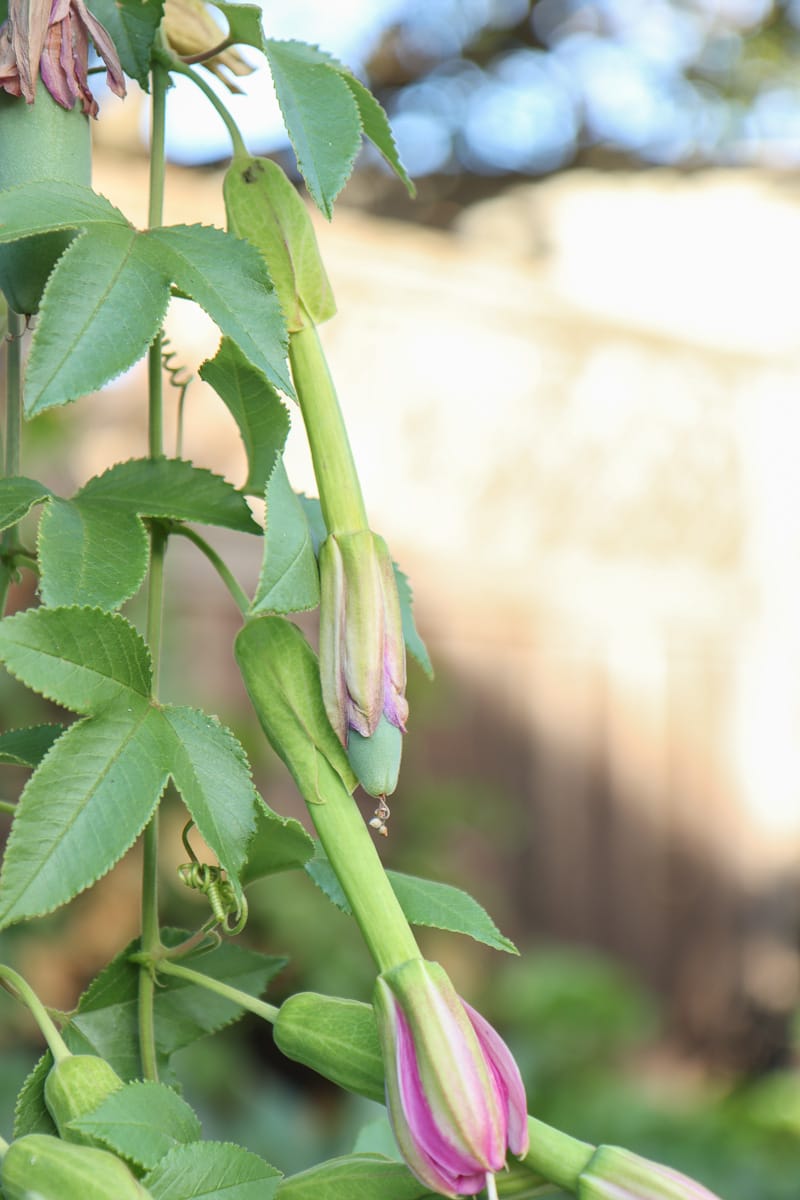
Banana passion fruit vines can be propagated by cuttings. So if your friends or neighbors have this plant growing in their own, it is a fantastic idea to get some cuttings and grow them in your home.
To propagate banana passion fruit by cuttings, you will need to take semi-hardwood cuttings from a healthy vine in summer. Semi-hardwood cuttings are stems that are partially matured and still flexible.
Choose stems that are about 6 inches long and have at least three nodes (the points where leaves or buds emerge). Remove any leaves or flowers from the lower half of the cutting and dip the cut end in a rooting hormone gel or powder. This will help stimulate root formation and prevent rotting.
Then, insert the cutting into a small pot filled with moist potting soil, leaving only one or two nodes above the soil surface. Press the soil firmly around the cutting and water it well. Cover the pot with a plastic bag or a clear dome to create a humid environment and place it in a warm and bright location, away from direct sunlight. The cutting should root in 3 to 4 months.
Banana passionfruit taste and how to enjoy them

Banana passionfruit is a delicious fruit that has a sweet, acidic, and tropical taste with subtle peach and nectarine-like nuances. It smells faintly of oranges and looks like a small banana with a yellow skin and orange pulp. The pulp contains many black seeds that are edible but may have a bitter flavor.
To enjoy banana passion fruit, you can simply cut it in half and scoop out the pulp with a spoon, eating it fresh or adding it to a smoothie.
My husband loves the flesh but doesn’t like the seeds to be blended into his smoothie. He uses a strainer to mash the fruit pulp and strain out the seeds, then adds them to a smoothie, often with a banana to increase the sweetness.
Bananapassion fruit can also be used to flavor various desserts, such as ice cream, cakes, and jams.
Banana passionfruit plant growing guide summary
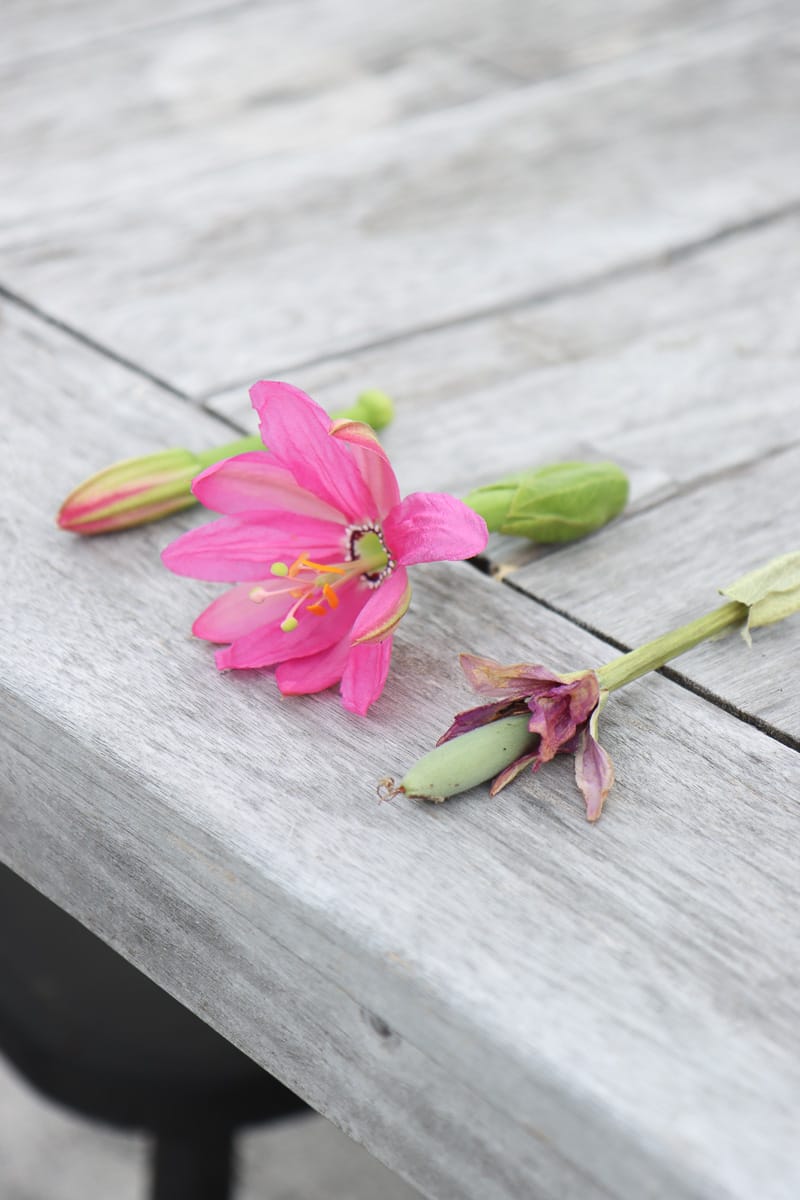
Growing and enjoying bananapassion fruit can be a rewarding endeavor for any backyard gardener. Whether you’re a seasoned gardener or just starting out, adding banana passion fruit to your garden is sure to bring a touch of the exotic to your home.
Remember, patience is key, and every step in the process is a learning opportunity. Happy gardening and with you a successful harvest!
More garden ideas
Best aromatic herbs to grow in your backyard garden
Incrediball hydrangea vs Annabelle hydrangea, side by side compared
Pin it for later

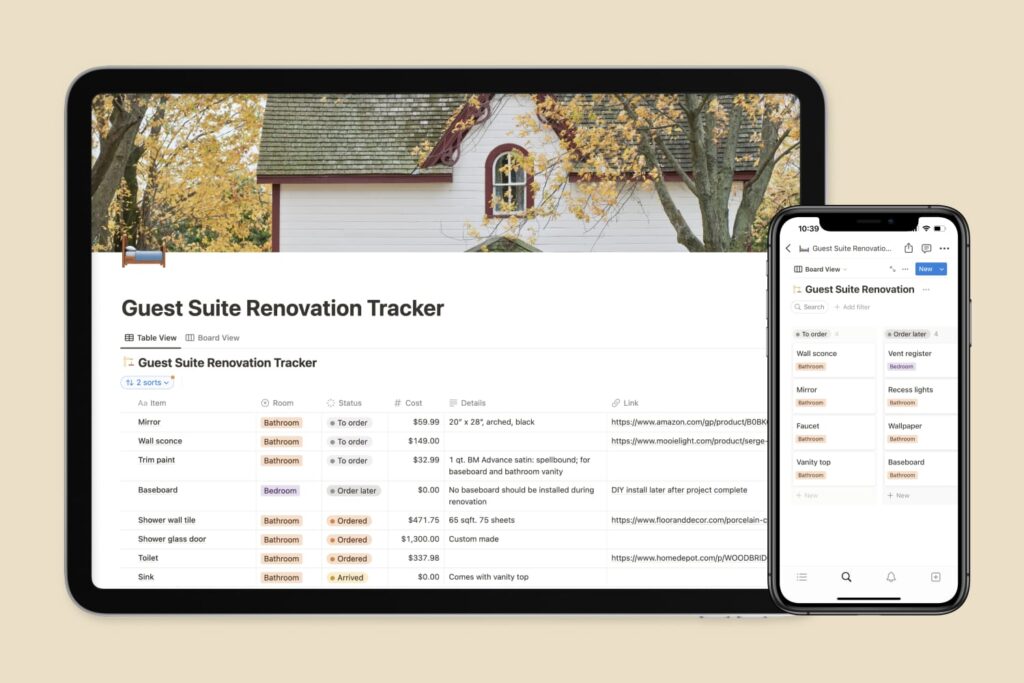
Leave a Reply